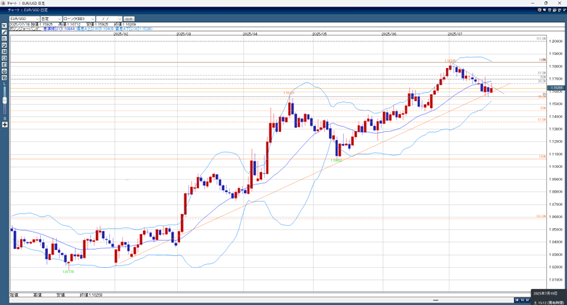
Last week, the euro fell to around 1.1550 after U.S. inflation data (CPI) came out higher than expected. But then, the euro went back up to 1.1720 after news that President Trump wanted to fire Powell, the head of the U.S. central bank. Later, when Trump denied the news, the euro dropped again to around 1.1550. Still, even with these moves, the euro stayed relatively strong because people started to feel unsure about the U.S. dollar.
The euro has been in a downtrend since its highest point on July 1. But it still closed slightly above the rising trendline that started in February. If the euro clearly goes below 1.1550, it could mean the uptrend is over. But if the euro stays above this level, it may start rising again.
This week, the European Central Bank (ECB) will hold a meeting. In the last meeting, ECB President Lagarde said that interest rate cuts might be ending soon. However, if the ECB shows more concern about the economy due to tariff uncertainty and says it may continue easy money policies, the euro could keep falling.
Also, late last week, Trump said he may add a 15–20% tax on goods from the EU. If the EU responds with its own taxes, this could lead to more euro selling.
Because of all this, there is a high chance that the euro’s upward trend may end.
This week’s expected EUR/USD range: 1.1450 – 1.1730 USD
Note: This information does not guarantee profits. Please make your own decisions when trading.
